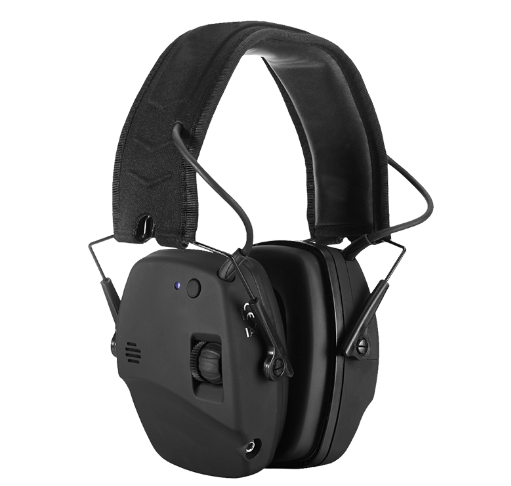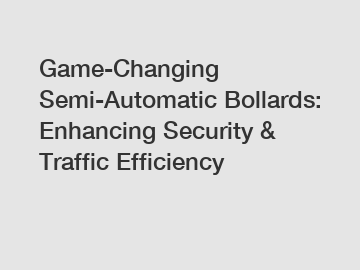What Is the Difference Between Electronic and Passive Shooting Ear Protection?
Shooting ear protection is crucial for anyone involved in shooting sports or activities to prevent hearing damage caused by loud gunshots. There are two main types of shooting ear protection: electronic and passive. While both types serve the purpose of protecting the ears, they differ in their functionality, features, and benefits. Let's explore the difference between electronic and passive shooting ear protection in more detail.
1. Functionality:
- Electronic Shooting Ear Protection:
Electronic shooting ear protection utilizes advanced technology to actively monitor and control the sound entering the ears. These devices consist of built-in microphones that pick up surrounding sounds, including speech or ambient noise, and transmit them to the user's ears in real-time. When a loud noise, such as a gunshot, is detected, the electronic ear protection instantly activates a mechanism to reduce the volume to a safe level or block the sound entirely. This allows the user to maintain situational awareness while protecting their ears from loud noises.
- Passive Shooting Ear Protection:
Passive shooting ear protection, also known as earmuffs or earplugs, provides a physical barrier to block and reduce the intensity of sound waves entering the ears. They work by using materials that absorb or reflect sound, such as foam or rubber, to reduce the noise levels. Passive ear protection does not have any electronic components or sound modulation features. It simply acts as a passive barrier to attenuate the sound and protect the ears.
2. Noise Reduction Rating (NRR):
- Electronic Shooting Ear Protection:
Electronic ear protection typically has a Noise Reduction Rating (NRR) assigned to it, which indicates the level of noise reduction provided by the device. The NRR value represents the maximum level of noise reduction achievable when the device is properly fitted and worn. Electronic ear protection with a higher NRR offers greater noise reduction capabilities, providing enhanced hearing protection in high-noise environments.
- Passive Shooting Ear Protection:
Like electronic ear protection, passive shooting ear protection also has an NRR value associated with it. The NRR value represents the amount of noise reduction provided by the earplugs or earmuffs. However, compared to electronic ear protection, passive options generally have a higher NRR value, meaning they can provide more effective noise reduction.
EM030 Bluetooth Shooting Hearing Protector
3. Communication and Situational Awareness:
- Electronic Shooting Ear Protection:
One of the significant advantages of electronic ear protection is its ability to amplify low-level sounds while protecting against loud noises. The built-in microphones pick up and amplify ambient sounds, allowing the user to maintain situational awareness, hear conversations, and remain connected to their surroundings. This feature is particularly useful for competitive shooters, hunters, or law enforcement officers who need to communicate and be aware of their environment while shooting.
- Passive Shooting Ear Protection:
Passive ear protection, such as earmuffs or earplugs, primarily focuses on attenuating the loud noises. While they provide excellent noise reduction, they may hinder the wearer's ability to hear low-level sounds or engage in conversations. The complete sealing effect of earmuffs or the inserted earplugs can block out most surrounding noises, which can be advantageous in high-noise environments but may limit situational awareness.
Related links:
Stay Dry and Stylish with PVC Rain Boots: Your Ultimate Guide to Waterproof Footwear
Active Noise Cancelling Headphones: Are They Good Enough for Hearing Protection?
The Versatility and Safety Benefits of LED Arrow Boards
What is the end of a guardrail called?
The Ultimate Guide to Kids Folding Protective Masks
Are vinyl gloves powder free?
What are the 4 general types of guardrails?
4. Battery and Power:
- Electronic Shooting Ear Protection:
Since electronic ear protection relies on built-in microphones and sound modulation mechanisms, it requires batteries to operate. The batteries power the device and enable the real-time sound processing and volume control features. It is important to monitor the battery life and ensure that the batteries are adequately charged or replaced to maintain the functionality of electronic ear protection.
- Passive Shooting Ear Protection:
Passive ear protection does not require batteries or any external power source. They are solely reliant on their physical design and materials to provide noise reduction. This makes passive ear protection a more straightforward and hassle-free option, as there is no need to worry about battery life or recharging.
5. Cost:
- Electronic Shooting Ear Protection:
Electronic ear protection tends to be more expensive than passive options. The added technology and features of electronic devices contribute to their higher price point. However, the cost can vary depending on the brand, model, and specific features offered.
- Passive Shooting Ear Protection:
Passive ear protection, such as earmuffs or earplugs, is generally more affordable compared to electronic options. They are relatively simple in design and do not involve advanced electronics, resulting in a lower cost.
6. Maintenance and Care:
- Electronic Shooting Ear Protection:
Electronic ear protection requires regular maintenance and care to ensure optimal performance. This includes cleaning the device, replacing batteries when necessary, and inspecting the device for any damage or wear. Additionally, electronic ear protection may come with additional accessories, such as audio jacks or Bluetooth connectivity, which require proper care and maintenance.
- Passive Shooting Ear Protection:
Passive ear protection, such as earmuffs or earplugs, requires minimal maintenance. They can be cleaned with mild soap and water and should be inspected for any signs of damage or deterioration. It is essential to follow the manufacturer's guidelines for cleaning and maintenance to ensure the longevity and effectiveness of the passive ear protection.
In summary, electronic shooting hearing protection actively monitors and modulates the sound entering the ears, providing real-time protection while maintaining situational awareness. Passive shooting ear protection acts as a physical barrier to reduce noise levels. Both types of ear protection have their advantages and considerations, and the choice between electronic and passive options ultimately depends on individual preferences, specific shooting requirements, and budget constraints.
Does CVS sell exam gloves?
Why Should I Use a Tailbone Protector?
Milita Heavy Duty Rising Beam Gate: Which Luxury Residence Features the Best Security Technology?
How effective is the PASGT helmet?
Essential Guide to White Disposable Gloves: Benefits
How much is a road bollard?
Is Investing in a Wrought Iron Fence a Wise Choice for Your Property?













